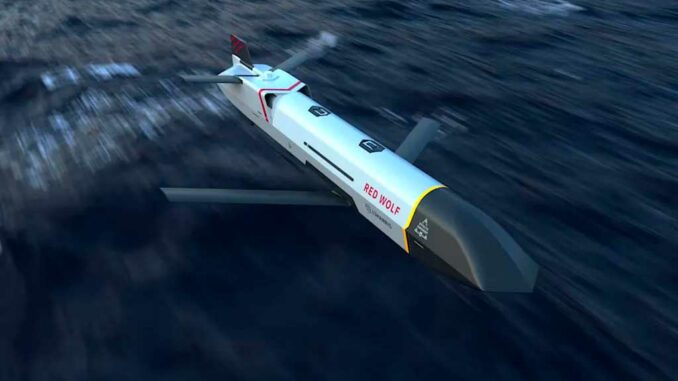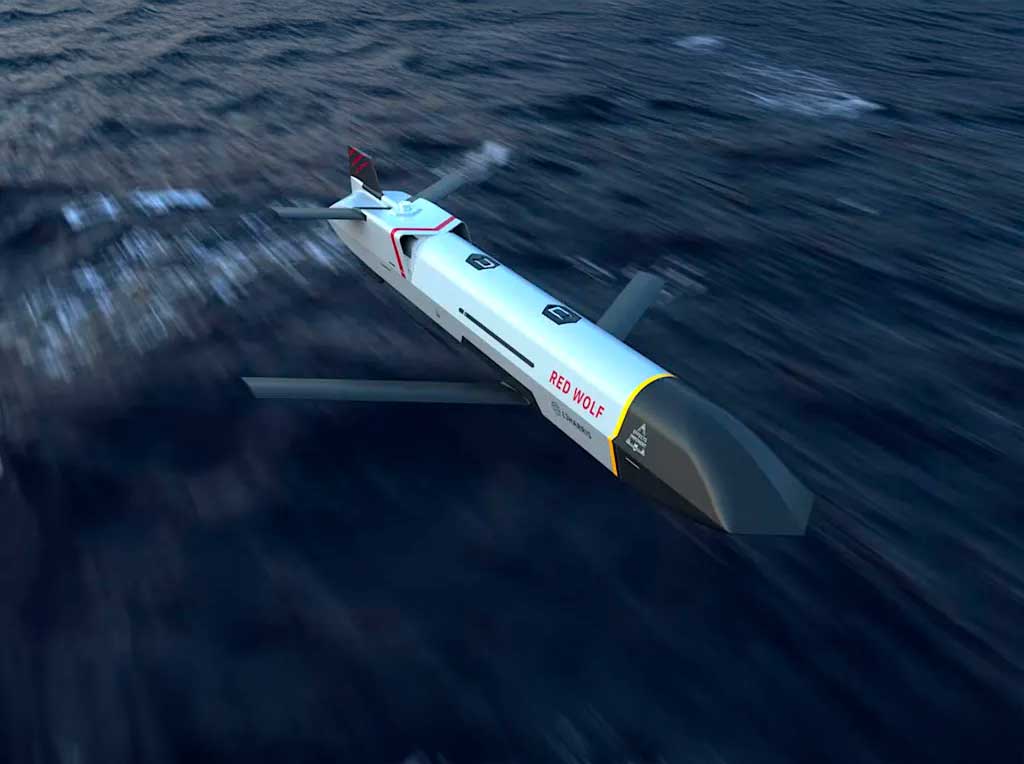
L3Harris presents the Red Wolf and Green Wolf mini-missiles, which are modular, inexpensive, and compatible with multiple launch platforms.
The American group L3Harris has unveiled two new compact, modular missiles: Red Wolf for long-range precision strikes and Green Wolf for electronic warfare. Designed to be launched from air, land, or sea platforms, these weapons aim to offer a low-cost, versatile and large-scale production. With an announced range of over 370 kilometers, an autonomy of 60 minutes and a unit cost of around $275,000, these munitions meet the growing needs of the US and allied armed forces in the face of the saturation of traditional defense systems. Red Wolf is already integrated into the Marine Corps’ LRAM program trials and is a milestone for the future PASM precision strike missile. This industrial offensive is part of a strategic drive to accelerate the production of medium-range weapons and marks the arrival of new hybrid formats combining drones and cruise missiles.
A new generation of hybrid missiles for long-range strikes
The Red Wolf and Green Wolf systems illustrate a clear strategic trend: to produce autonomous, stealthy munitions capable of operating at a safe distance, while limiting costs and development times.
The Red Wolf is designed for precision strikes against land or naval targets. It uses a compact turbojet engine, propelling the missile at high subsonic speed, with a range exceeding 370 kilometers at low altitude. The missile has foldable fins, two air intakes integrated into the fuselage, and a reduced radar signature thanks to its carefully designed shape (break line on the front fuselage, flattened nose). These features demonstrate a design focused on passive stealth.
The Green Wolf, meanwhile, uses the same airframe as the Red Wolf but carries an electronic warfare payload. It is designed to detect enemy emissions, jam radars, or act as a communications relay. This modularity allows mixed waves to be launched: defenses are neutralized by the Green Wolves, followed by a kinetic strike by the Red Wolves.
These missiles meet several tactical criteria:
- Modularity: same airframe, variable payloads,
- Versatility: compatible with helicopters, ground vehicles, and ships,
- Controlled cost: approximately $275,000 compared to more than $1.4 million for a JASSM-ER missile.
The logic behind these systems is in line with the need to strike beyond enemy defenses while avoiding the costs of traditional missiles.
Integration into existing platforms: the case of AH-1Z Viper helicopters
The Red Wolf missile was tested in 2021 as part of the LRAM (Long Range Attack Missile) program, which aims to equip AH-1Z Viper attack helicopters with extended strike capabilities.
Currently, these aircraft mainly use AGM-114 Hellfire or AGM-179 JAGM missiles, which have a range of no more than 16 kilometers. The Red Wolf, with a range of 370 kilometers, increases this distance by a factor of more than 20, while offering compatibility with existing platforms.
A Viper can carry several Red Wolves under its wings, enabling it to strike at long range without exposing itself to ground-to-air defenses. This approach redefines the role of close-range platforms, which become long-range effect vectors.
The LRAM program is part of a larger project: PASM (Precision Attack Strike Missile), which could incorporate other configurations. It aims to create a coherent family of long-range missiles, compatible with helicopters, drones, and potentially ground launchers.
This tactical evolution offers several advantages:
- Reduced dependence on air superiority,
- Rapid strike capability without visible escalation (stealth missiles, remote launches),
- Ability to saturate defenses through coordinated attacks.
The Marines’ strategy clearly shows that low-cost compact missiles are set to gradually replace conventional solutions in high-intensity conflicts.

Technological convergence between drones, missiles, and decoys
The Red and Green Wolves illustrate the current convergence between drones, cruise missiles, and remote effects. Halfway between an autonomous kamikaze and a programmable cruise missile, they incorporate capabilities that were previously spread across several types of weapons.
In addition to their modularity, L3Harris mentions the possibility of future variants: active decoys, ISR sensors, mini jamming drones, and re-transmitters. This “wolf pack” would be capable of operating in packs:
- Green Wolf leads the way, locating radar emissions,
- Red Wolf strikes the identified target,
- A decoy attracts enemy defenses to saturate their fire control systems.
This concept is not unique. The US Army has tested a version of the Red Wolf as a communications relay. The MQ-1C Gray Eagle drone is being considered as a launch platform. The objective is clear: delegate the detection, jamming, and strike phases to a single entity, reducing reaction time and the need for human supervision.
This type of system is made possible by the miniaturization of components, on-board information processing, and algorithmic autonomy.
However, many questions remain about:
- The exact guidance system (inertial, GPS, imaging, sensor fusion),
- Resistance to electronic warfare,
- The ability to operate in contested airspace.
The potential is there, but operational tests will have to validate these technological ambitions.
A US market dominated by industrial pressure and volume logic
The announced price of the Red Wolf – around $300,000 – is a decisive factor in the production logic. This price is close to that of a JAGM missile, but with range capabilities multiplied by 20.
The goal of producing 1,000 units per year is part of the US strategy to stockpile ammunition in anticipation of a prolonged conflict in the Pacific. Experience in Ukraine has demonstrated the fragility of traditional stocks and the need for inexpensive, storable, and easily replaceable solutions.
The Red/Green Wolf concept meets these criteria:
- Ease of production, thanks to a common cell,
- Low cost, without compromising performance,
- Deterrent effect, through the potential saturation of enemy defenses.
The strategic objective is clear: maintain a volume advantage, even if it means sacrificing some unit performance. Effectiveness no longer relies on the weapon alone, but on the coordination of multiple vectors, similar to drone swarms.
In this context, companies such as Anduril (Barracuda-100M) and Lockheed Martin (CMMT) are also developing their own modular missiles. The market has entered a phase of open competition, with standardization, cost, and lead times at stake.
The stakes go beyond the military sphere: this is also a test of industrial capacity in the face of prolonged wear and tear scenarios. The effectiveness of a modern army no longer depends solely on maximum performance, but on its ability to sustain a conflict over time.
War Wings Daily is an independant magazine.